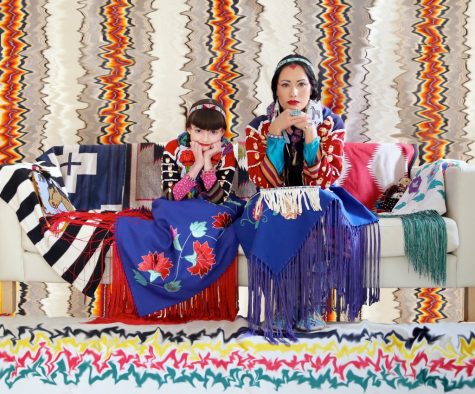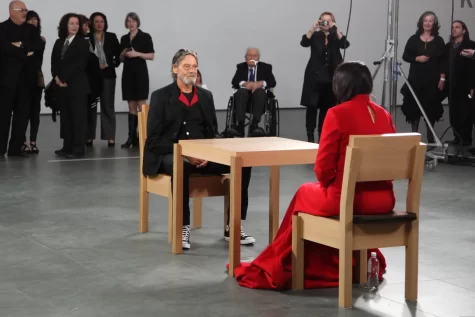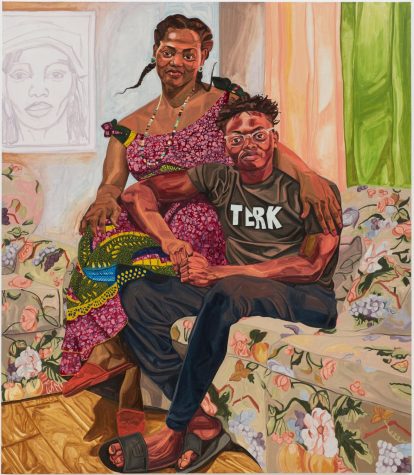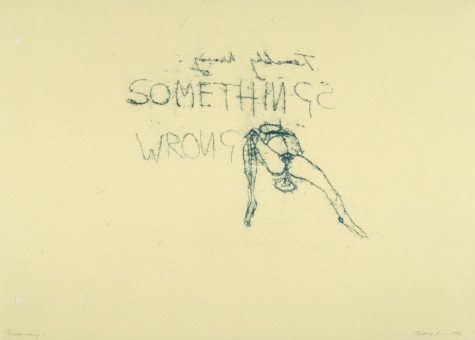Celebrating Female Artists for Women’s History Month
March 26, 2022
The month of March is honored annually in America as Women’s History Month. Every year, people nationally recognize not only the amazing women in their lives but also the women in history that paved the path for feminism today. March is a great reminder of how far women’s rights have come. Women were excluded from most of history in America. Not only were their achievements erased from history books, but they experienced gender discrimination in almost every aspect of their everyday lives.
The modern world is gradually moving towards gender equality, but these issues still occur globally. To creatively express these pressing issues, female artists across the world have created many art pieces that beautifully describe femininity and its struggles. In recognition of these women, this article will cover some female artists for this year’s Women’s History Month.

Wendy Red Star
This artist from Montana and a member of the Crow Nation recognizes her Native American culture in colorful and vibrant pieces, many of them depicting photographs of her and her daughter. These photos oppose Native American stereotypes in playful ways, bringing up conversations about how they are romanticized in the media, and not representative of actual people. Wendy Red Star also creates quilts in which she uses her own family’s photos. Her work is beautifully personal, while also containing some irony about the discrimination she has faced.

Marina Abramovic
This once Museum of Modern Art (MoMA) featured performance artist approaches art in a nontraditional way, using just her body and an audience as a creative medium. For three months, Marina Abramovic sat at a table in the MoMA and stared at whatever stranger sat across from her. No words were exchanged between them, just eye contact. Abramovic herself was surprised that so many people wanted to sit with her since, for those three months, she had thousands of people visit her exhibit. The human contact of simply holding a gaze can inspire deep emotions that cannot be brought out otherwise. The vulnerability in that connection was what moved thousands of people to sit with Abramovic as she offered herself as a person to lighten their sorrows without conversation.

Jordan Casteel
This painter focuses most of her work on the people around her. Not only does Casteel paint colorful portraits of family members and lovers, but she also paints the strangers she sees in Harlem. Living in New York City, her art intimately depicts the city people of her own neighborhood. She shows her audience the people and surroundings that would often go unnoticed, as well as the people close to her in her life. She beautifully brings them to life through the bold colors she uses, making the viewer feel as if they also live in Harlem with her. Casteel only paints black subjects, offering artistic representation for people of color.
Yun Suknam
A Korean artist, Suknam did not start her life as an artist. Before, she was a traditional mother and wife. Suknam began to question her position as a woman, and once she reached her 40s, she pursued art that was feminist in nature. She creates art in different mediums that feature female subjects, providing artwork that showcases women who would otherwise feel unimportant. In a metaphorical sense, these paintings remind individual women that they are seen. Although they may feel insignificant, Suknam reminds them that someone always sees them and appreciates them.

Tracey Emin
This contemporary artist creates work through many different mediums. A lot of her work expresses sexual trauma. Emin creates brutal contemporary work full of raw emotion. She displays her life unapologetically in her art, presenting taboo topics that otherwise go undiscussed to the world. Her work is inherently feminist, depicting the problems women face in her craft. A gender activist herself, Emin expresses hope that someday male and female artists will be equally represented.
